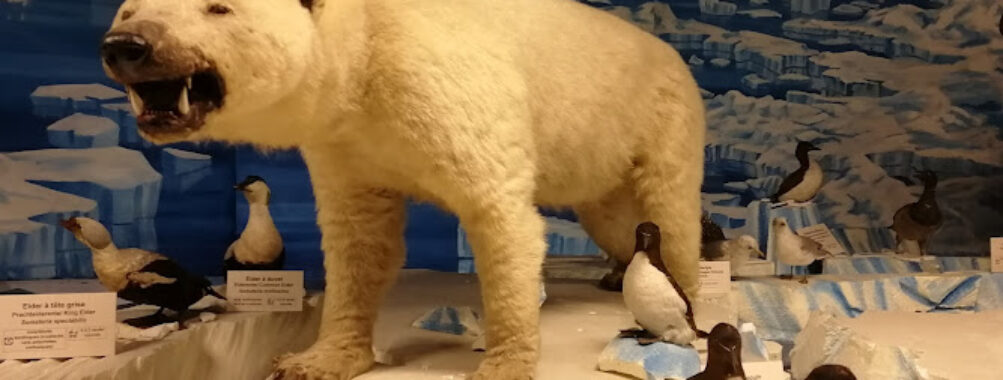
Strasbourg Zoological Museum
Table of Contents
Description
The Strasbourg Zoological Museum presents itself as a quietly compelling stop for anyone interested in natural history, zoology, or just curious about the strange and splendid diversity of animal life. Located in the city of Strasbourg, this museum brings together a long-standing collection of preserved specimens that chart life from the Arctic tundra to the high plateaus of the Andes. Visitors will find displays of birds, insects and mammals — mounted, glass-cased, catalogued — and an old-fashioned cabinet-of-curiosities feel that many modern museums have lost. It is the sort of place that rewards a slow walk and a few repeated glances: a feather pattern that looks different up close, an insect case that suddenly reveals a tiny, perfect world.
The collection has historical depth. Some specimens date back decades — sometimes a century or more — and that gives the galleries a dual personality: part scientific archive, part time capsule. There are excellent ornithological displays showing species from Europe and beyond; rooms dedicated to insects that make entomology feel theatrical rather than clinical; and mammals arranged to highlight form and function. But it’s not merely an assemblage of dead things. Curators have aimed to tell stories about adaptation, habitat, and human interaction with animals. Labels and panels weave in natural history, ecology, and the occasional bit of local Alsace context.
Many travelers appreciate the museum for being intelligently modest. It doesn’t pretend to be the largest natural history museum in Europe, nor does it bombard with flashy multimedia. Instead, it offers close-up encounters with specimens: the subtle iridescence on a bird’s wing; the delicate symmetry of beetle collections; the imposing skeletons that make students and kids whisper. And yes, some exhibits feel dated — not in a negative way, but in a way that reveals the museum’s long life and scholarly roots. That can be charming, although visitors expecting cutting-edge interactive displays might find parts of the space pleasantly old-school.
Accessibility has been taken seriously: there is a wheelchair-accessible entrance and accessible restrooms, which makes it easier for a broad range of visitors to enjoy the collection. Practical amenities are simple — restroom facilities are available, but there is no on-site restaurant — so plan to grab a bite elsewhere in Strasbourg. Families with children often report that the museum works well for younger explorers; the cases and dioramas invite questions, and the size of the museum means visits rarely feel overwhelming for little legs and short attention spans.
For people who like to peek behind the curtain, the museum’s ties to academic and scientific communities give it an extra layer of interest. It has served as a teaching collection and research resource, and that scholarly vibe shapes the way specimens are displayed and documented. The information is often precise and oriented toward real scientific inquiry rather than purely entertainment. That will appeal to serious natural-history fans and to travelers who prefer learning-rich experiences over gimmicky attractions.
Atmospherically, the museum has a human-scale intimacy. The rooms aren’t cavernous; lighting tends to be focused on the specimens; and the layout encourages a narrative-style progression rather than a scattershot, “see-everything-at-once” approach. In quieter hours it’s easy to linger next to a case and let the imagination run: picture a long-ago collector painstakingly preparing a specimen, or a young student discovering the world of invertebrates for the first time. Those small, personal connections are what many guests remember most.
There are particular highlights worth flagging: the bird collections, which cover species from the region and beyond; meticulously prepared entomology cabinets that will delight bug enthusiasts; and a series of mammal displays that show diversity in form and adaptation — from compact insectivores to larger, more dramatic specimens. Some of the rare or historically significant specimens are the kind of things that make a natural-history nerd get unexpectedly excited. But even casual museum-goers will find intriguing curiosities and clear, well-researched explanatory material.
Practicalities are straightforward but useful to know. The museum is compact enough that a focused visit can be accomplished in about an hour, while slower readers and families might want two hours to wander and absorb. Because it is a smaller, more specialized institution than the big metropolitan museums, crowds are usually manageable; on the other hand, that means group tours and school visits can noticeably shift the atmosphere, turning a hushed gallery into a lively classroom. For photographers: flash is typically restricted near delicate specimens, and many cases reflect light, so a little patience and angling will help.
One should note the museum’s honest balance: much praise centers on the depth and care of the collection, while occasional comments from visitors point to the older display style and the lack of modern interactive infrastructure. That’s not a criticism to be afraid of — it’s part of its charm — but it helps set expectations. If a traveler wants flashy, touchscreen-driven engagement, the Strasbourg Zoological Museum will feel a bit understated. If, however, someone wants to see genuine scientific specimens presented with clarity and respect, they will likely leave satisfied.
Finally, the museum feels like a quietly local institution with broader appeal. It speaks to Strasbourg’s role as a center for education and culture in Alsace, and to a deeper European tradition of collecting and studying nature. Visitors who combine a stop here with other cultural explorations in the city often find the contrast refreshing: after cathedral spires and half-timbered streets, the museum offers a different way to connect with the world — one measured in feathers, chitin, fur, and fin. For travelers who savor details and like to follow where curiosity leads, the Strasbourg Zoological Museum is an unexpectedly rewarding chapter in a visit to the city.
Location
Places to Stay Near Strasbourg Zoological Museum
Find and Book a Tour
Explore More Travel Guides
No reviews found! Be the first to review!